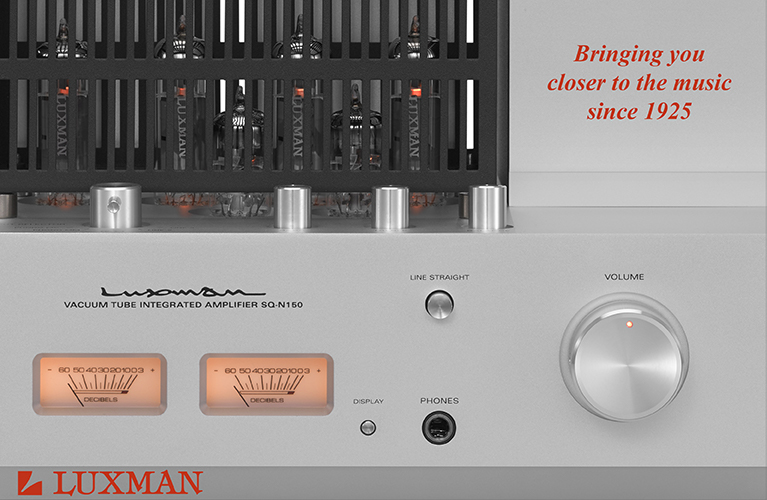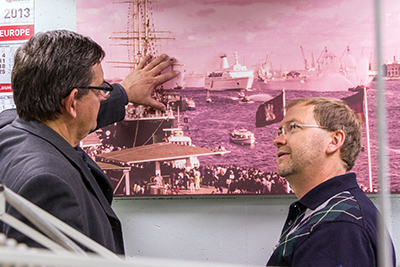 Sven Bilén and Thomas Werner, chief engineer at ELACWhen I told SoundStage! Network editor Jeff Fritz that I’d visited the speaker manufacturer ELAC, he said that he was very curious about the company. “Write!” he said. I immediately objected -- my beat is Scandinavian audio, and ELAC is in Germany. His reply: “The Scandinavian man travels.”
Sven Bilén and Thomas Werner, chief engineer at ELACWhen I told SoundStage! Network editor Jeff Fritz that I’d visited the speaker manufacturer ELAC, he said that he was very curious about the company. “Write!” he said. I immediately objected -- my beat is Scandinavian audio, and ELAC is in Germany. His reply: “The Scandinavian man travels.”
Actually, it’s not entirely odd that I’d cover ELAC for this column -- the company is based in Kiel, in Schleswig-Holstein, the northernmost state of present-day Germany. Several times in its history, Schleswig-Holstein has been part of Denmark, and it’s only a four-hour drive from my home. Kiel is now mostly known as a mecca for sailors, with major regattas and fantastic conditions for boaters.
A brief history
I joined ELAC’s Danish distributor, Erik Hansen, for a sneak preview of the company’s new active loudspeakers. ELAC starts their active saga with two models from their AIR-X 400 series of active speakers, the compact 403 and the 407 tower. More about them later; first, a little about my visit.
My first visit took place a few years ago, when ELAC entered the Scandinavian market. At the time, I wrote that the company was one of Germany’s best-kept hi-fi secrets. Much has happened since then, and ELAC products can now be found in many markets outside Germany.
ELAC was founded in 1926. Their specialty then was sonar systems for maritime use. After WWII, like many other German companies that were forbidden to produce military goods, they made sewing machines, auto parts, and audio gear, including the comprehensive manufacture of turntables, pickups, microphones, and radios. In addition, they introduced and distributed in Germany such brands as Sony, Fischer, and Nakamichi. In 1978 they sold their nautical division to Honeywell and, from then on, concentrated on audio.
In the early 1980s, ELAC faced financial problems, and in 1981 John & Partner Vetriebsgesellschaft mbH, the Munich company that handled the marketing and distribution of ELAC products, took over. ELAC was now led by Wolfgang John, a native Austrian who is still CEO. Under his leadership, the company began to develop speakers in 1984, and in 1985 they came up with the still-unique 4PI omnidirectional tweeter. A few years later they incorporated the JET tweeter production into the company, a tweeter that, more than anything else, now defines ELAC speakers.
In the early ’90s, sales of LPs and the demand for phono cartridges plummeted. ELAC stopped making cartridges in 1997, and has since concentrated solely on producing speakers. However, ELAC does not merely assemble speakers, as so many companies do, but manufactures all drive-units and other internal parts themselves. Today they regret the decision to stop making cartridges, but Wolfgang John told me that, at the time, no one foresaw the resurgence of the LP, their equipment was worn out, and their workforce was aging. So it was decided to shut down cartridge production instead of investing the large sums required to keep it going.
Specialties
While ELAC builds most of their speaker subassemblies themselves, the cabinets are not made in-house. Nowadays, all cabinet production takes place in Europe; I’m told this is an advantage in terms of quality, cost, and flexibility, and that ELAC is proud to print “made in Germany” on each speaker.
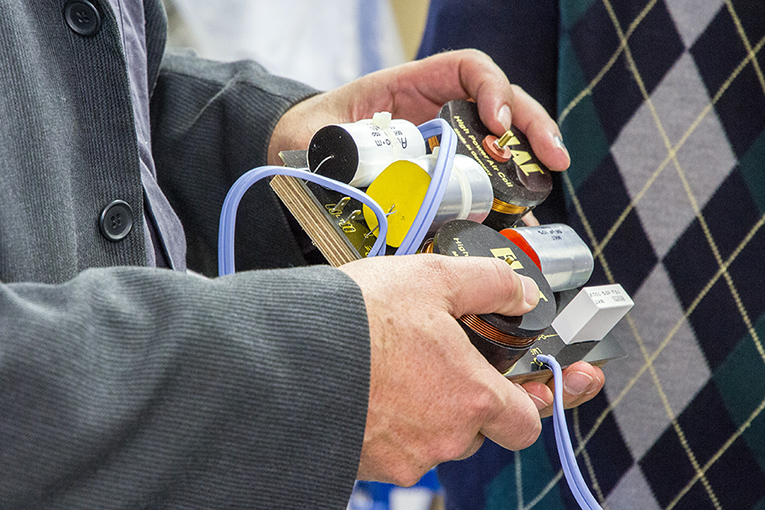 An ELAC crossover board
An ELAC crossover board
One immediately notices three things about ELAC speakers. First, most have a downfiring port. To fully control how the port behaves in a room, each speaker has a base plate, with four legs that raise the cabinet to just the right height to create the proper air gap and thus guarantee the correct amount of airflow. And such a design looks really neat.
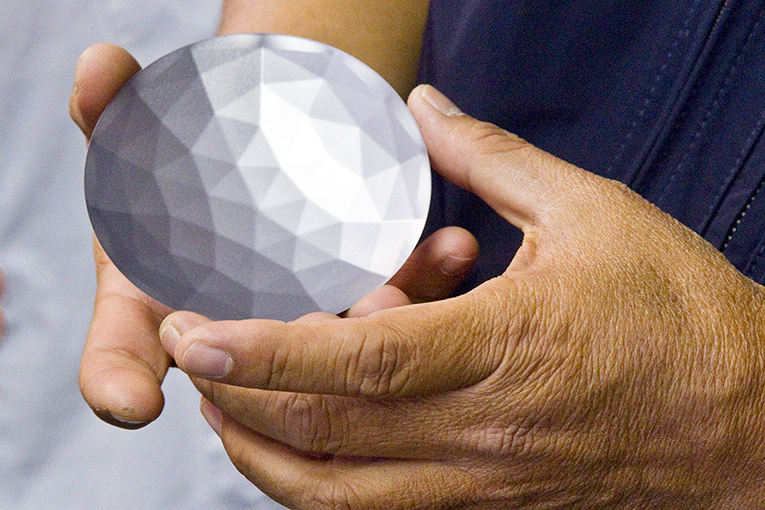 ELAC's unique cone structure
ELAC's unique cone structure
The diaphragm of each bass and midrange cone has a crystalline aluminum structure, to make the diaphragm as rigid as possible. In fact, each diaphragm is a sandwich: the crystalline aluminum is glued to a paper cone using a precise gluing process. ELAC says that the exact locations of the glue points, and the amount and type of glue, affect the sound more than one would think, and that they’ve optimized their gluing with the highest precision.
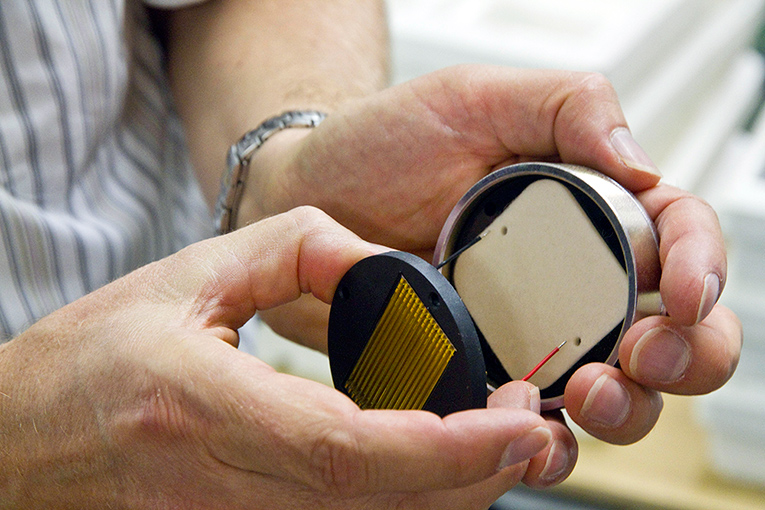 JET-tweeter production
JET-tweeter production
The JET tweeter, now in its fifth generation, is an Air Motion Transformer, a technology first developed by Dr. Oskar Heil. ELAC has further developed the principle, and the JET V is a really potent tweeter. (The JET IV was developed for use only in cars.) ELAC has optimized the sound of the JET while also streamlining the manufacture of its handmade elements. It took nearly half an hour for a craftsperson to fold, origami-like, the diaphragm of the JET III and assemble the tweeter. The JET V can be made in only one-third that time.
Active
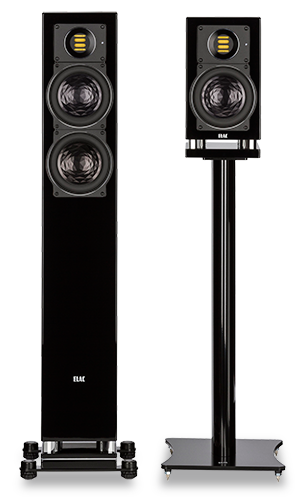 I saw a working prototype of one of ELAC’s new, active AIR-X 400 speakers at Munich’s High End exhibition in May 2013. Since then, ELAC has fine-tuned the models with the thoroughness characteristic of German industry. They’ve taken time -- a lot of time -- to create an active speaker that would meet their demands for high levels of sound quality, durability, and function. The results: class-A/B amplification, a switch-mode power supply, and a transmitter/receiver of the same type used by Dynaudio. The 400 speakers can be operated in balanced or single-ended mode, and each has a series of controls with which the user can change various settings, depending on where the speaker is placed in the room.
I saw a working prototype of one of ELAC’s new, active AIR-X 400 speakers at Munich’s High End exhibition in May 2013. Since then, ELAC has fine-tuned the models with the thoroughness characteristic of German industry. They’ve taken time -- a lot of time -- to create an active speaker that would meet their demands for high levels of sound quality, durability, and function. The results: class-A/B amplification, a switch-mode power supply, and a transmitter/receiver of the same type used by Dynaudio. The 400 speakers can be operated in balanced or single-ended mode, and each has a series of controls with which the user can change various settings, depending on where the speaker is placed in the room.
The AIR-X models, both the 403 and 407, played with a calmness and self-secure attitude that was immediately noticeable. Like the passive ELAC models I’ve heard, the treble had super-high resolution, but these active models had even better control. With some amplifier-cable combinations, the passive versions sometimes had a bit too much treble presence; the active models were more consistently neutral in this regard. This is a natural consequence of the fact that the matching of amplifier and speaker driver is as good as it can be.
We had plenty of time to play the new speakers in ELAC’s listening room. The passive models had rich body and distinct bass, but with the active AIR-X 400s there was even more meat on the music’s bones, and a nicer body to the sound. The fine driver control set the scene with these speakers. Some may object that the sound of the AIR-X models might sometimes feel a little too well controlled, but that didn’t mean it was boring. Far from it -- it was a treat to hear music through these speakers.
. . . Sven Bilén
svenb@soundstagenetwork.com






















